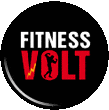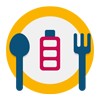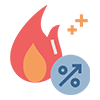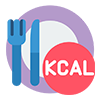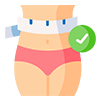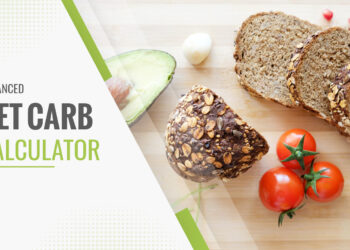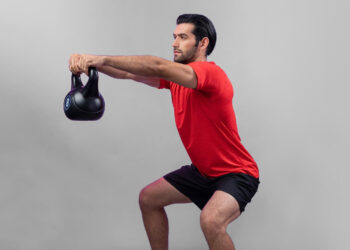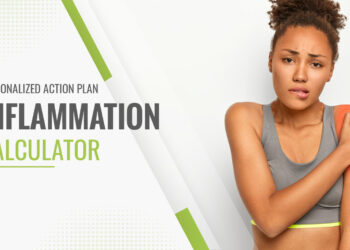How Many Calories Does Rollerblading Burn?
How many calories you can burn while rollerblading is dependent on a number of things, such as your height, weight, body composition, and whether or not you are skating casually or hitting the pavement hard.
A person can burn up to 700 calories per hour rollerblading at a casual pace while burning up to 1350 calories at maximum effort. This calculator will give you a realistic idea of how many calories you can burn by adding just a few detail
How to Use The Calculator
Using a calorie counter has never been easier. To calculate how many calories have been burned from rollerblading, just input your weight and the time that you’ve spent rollerblading or plan to be rollerblading for. Then select the specific activity that you plan to perform and then hit “CALCULATE“.
Using the calculator step-by-step:
- Choose your unit of measurement (pounds or kilograms)
- Enter your weight and select the amount of time that you are rollerblading for
- Look for the specific type of rollerblading activity that you’re doing and the intensity of the activity. Some of the options you will have are inline skating, exercise training, moderate pace, fast pace, and recreational pace. Select the corresponding intensity that you’re performing the exercise with
- Hit “CALCULATE”
How The Calculator Works
Our rollerblading calculator uses MET (metabolic equivalent of task) values to find out the number of calories that rollerblading and its corresponding intensity will burn.
This value is determined as set by a convention of 3.5 mL of oxygen per kilogram each minute while doing the specific activity [3]. It also takes into account your body mass while performing the exercise which will have an effect on the number of calories you burn.
Level Up Your Fitness: Join our 💪 strong community in Fitness Volt Newsletter. Get daily inspiration, expert-backed workouts, nutrition tips, the latest in strength sports, and the support you need to reach your goals. Subscribe for free!
MET
Using MET to determine your body’s energy expenditure is what our calculator is primarily used for. A MET value is the number that determines the energy it takes to perform various activities, such as rollerblading. This is the ratio that shows the relationship between your active metabolic rate to the resting metabolic rate.
The active metabolic rate (AMR) determines the calories that you continue to burn throughout the day, while the resting metabolic rate (RMR) measures the number of calories that you are burning when your body is at rest and not actively digesting.
Activities that have a MET value of 1 burn as many calories as your RMR, while activities with a MET of 4 will burn 4 times as many calories as your RMR. This means that you expend 4 times as much energy as the activity with only 1 MET.
Formula
The formula that our rollerblading calculator uses to determine the number of calories burned per minute is (MET x bodyweight in Kg x 3.5) ÷ 200.
Examples
An individual weighing 180 pounds will burn approximately 840 calories from moderate pace inline skating for one hour. Inline skating with moderate effort has a MET of 9.8 which means that it burns 3.5 times as many calories as your RMR.
This is what the formula for calculating the calories burned while rollerblading will look like:
- Calories burned (per minute) = (body weight in kg x MET x 3.5) ÷ 200
- Calories burned (per minute) = ( 81.65 x 9.8 x 3.5 ) ÷ 200
- Calories burned (per minute) = 14 calories x 60
- Calories burned (per hour) = 840 calories per hour
Another example is performing inline skating at maximum effort. Inline skating at maximum effort has a MET of 14 meaning this burns about 14 times as many calories as the RMR. Below is the example of the calorie calculator for a 220-pound person:
- Calories burned (per minute) = (body weight in kg x MET x 3.5) ÷ 200
- Calories burned (per minute) = ( 99.79 x 14 x 3.5 ) ÷ 200
- Calories burned (per minute) = 24 calories x 60
- Calories burned (per hour) = 1440 calories per hour
What is Rollerblading

Rollerblading is also sometimes called inline skating, and it relies on rollerblades to skate on solid ground. The most common skates have high shafts and four in-line wheels under the soles. However, there are other options available such as classic quad roller skates with two lines of two pairs of wheels. Whether you use quads or the standard inline skates, they are always best used on smooth, concrete paths.
The sport was most popular in the 90s but it has since made a comeback. Not only do people love it as a leisurely activity, but they have discovered that you can burn a lot of calories while doing it [2]. There are also rollerblading courses available to anyone that isn’t quite sure how to get started. There are so many great reasons to begin rollerblading today.
Level Up Your Fitness: Join our 💪 strong community in Fitness Volt Newsletter. Get daily inspiration, expert-backed workouts, nutrition tips, the latest in strength sports, and the support you need to reach your goals. Subscribe for free!
What Muscles Are Targeted During Rollerblading
If you want to exercise but don’t particularly like going to the gym, rollerblading would be an excellent option. It’s a perfect workout for your lower body. You often have to launch from a crouched position, and it involves a lot of pushing and breaking, which will all work to give you a tighter physique in the thigh, glutes, and calf muscle area.
You might be surprised to find out that rollerblading can also work your core. While rollerblading, your back and abs have to be constantly activated so that you can remain balanced and upright without falling on your butt. Rollerblading can improve your posture coordination, stabilize your joints and help you to be more aware of your body.
Improving Your Technique
The best way to get the most out of rollerblading is to ensure that you are maintaining the right techniques in the first place [1]. Whether this is your first time rollerblading or you’re getting back into it after a break, it’s good to know the basics before you put wheels to pavement. Here are some great techniques to get you started.
Mastering the Starting Position
Ready…set…go! Hold up, we aren’t there yet. The best stance to start with is with your legs spaced shoulder-width apart and your knees slightly bent. Point your feet slightly outward and tilt your upper body forward so that your hips are flexed. Stay balanced by activating your abs.
Practice Balance
Keeping balanced helps you to stay upward. Start by putting one foot forward diagonally until the heel is in line with your toe. Next, swing your arm forward so that your weight is distributed evenly. Hold it before you swing your arm and foot back to the starting position. Repeat to the other side.
Improve Your Strength
If you want to activate your butt, inner and outer thigh muscles and improve your strength, this technique will help you. When you are at the starting position, push off your heels and move forward simultaneously.
You should have your legs in the V shape while you do this. Next, turn your toes inwards, moving the skates from the inside to the outside. Repeat these movements until they become flawless.
Skater’s Stride
You might be familiar with the skater’s stride, especially if you have been ice skating before. It’s simply just pushing off one foot and shifting your body weight to the other foot. As you move diagonally, you will form a half-V shape.
As you move one foot forward, you lower your other foot behind the front heel and push forward to make the second half of the V shape. Make sure you are swinging your arms with each step as you skate. When you have the momentum you want, place your feet parallel to each other and move forward.
Braking Is Important
Braking is probably one of the most important things to learn about rollerblading because it helps you stop yourself from rolling right into the nearby lake.
There are three main ways to brake:
- Buffer braking works with the brake pad at the heel. Transfer your body weight to your support leg while pointing the ball of your foot, pressing your heel into the ground. Next, bend your knees and get your stability by leaning your upper body forward.
- Snowplow braking requires you to point your toes toward each other to create an inverted V shape.
- T-braking is when you shift your body weight onto the supporting leg and then place the opposite foot behind you to form a T-shape.
Wrapping Up
Rollerblading can be an enjoyable exercise that you can do alone or with a friend. It’s not difficult to learn and it allows you to be out in the fresh air.
If finding a fun way to exercise is what you are looking for then rollerblading can provide you that in more as the possibility to burn lots of calories is available to you. By determining how many calories you can burn ahead of time will allow you to have a game plan before you get started.
Using MET to figure out the number of calories you can burn through the different paces in inline skating will give you a realistic number of what you can expect to burn. With the research supporting the benefits that rollerblading can provide, starting a routine can be a great way to reach your health and fitness goals.
References:
- Learn to rollerblade with “Tips for Beginners”
- Is Rollerskating a Good Workout? From Health.com (2020)
- Jetté, M., Sidney, K., & Blümchen, G. (1990). Metabolic equivalents (METS) in exercise testing, exercise prescription, and evaluation of functional capacity. Clinical cardiology, 13(8), 555–565. https://doi.org/10.1002/clc.4960130809

